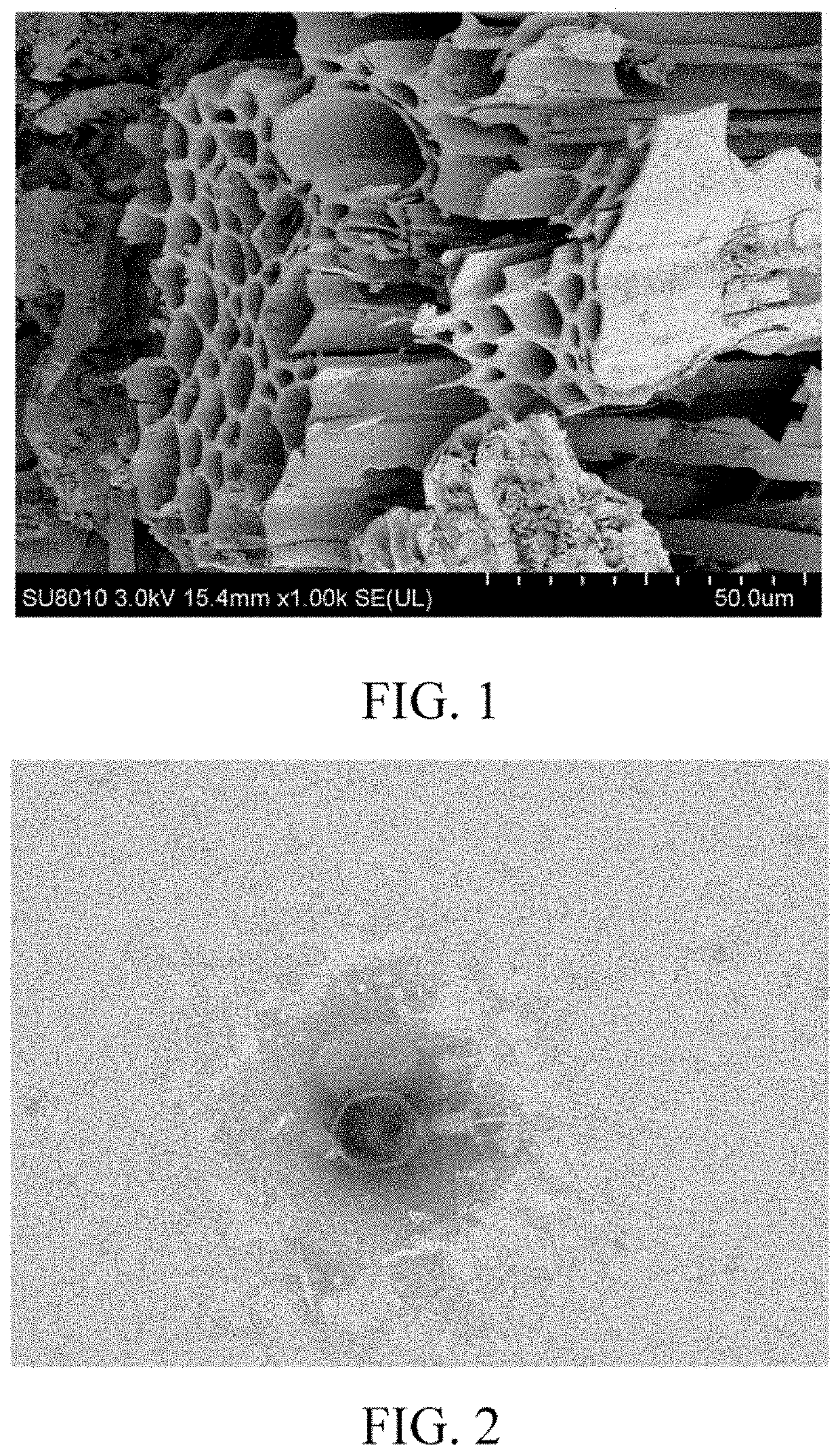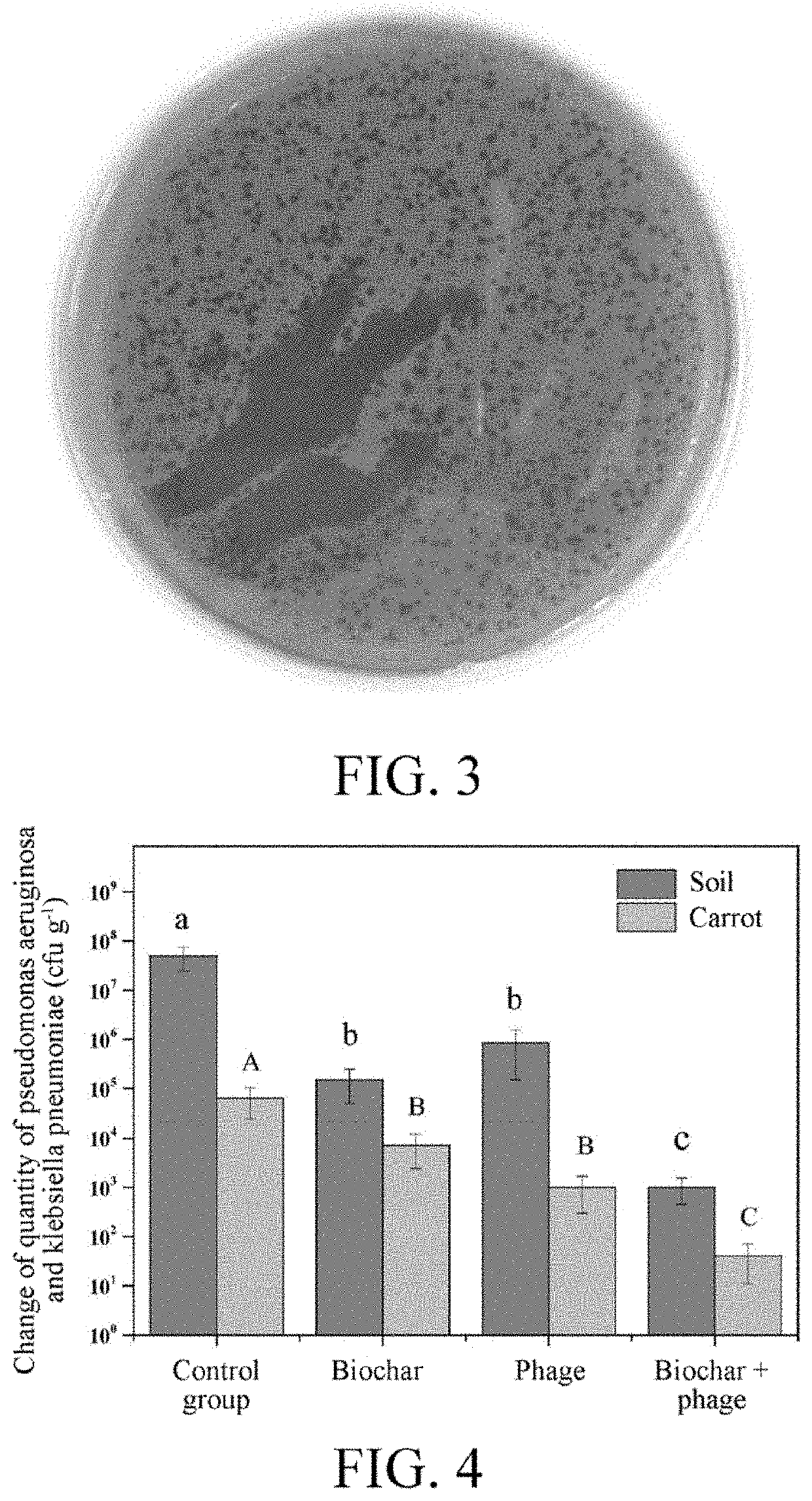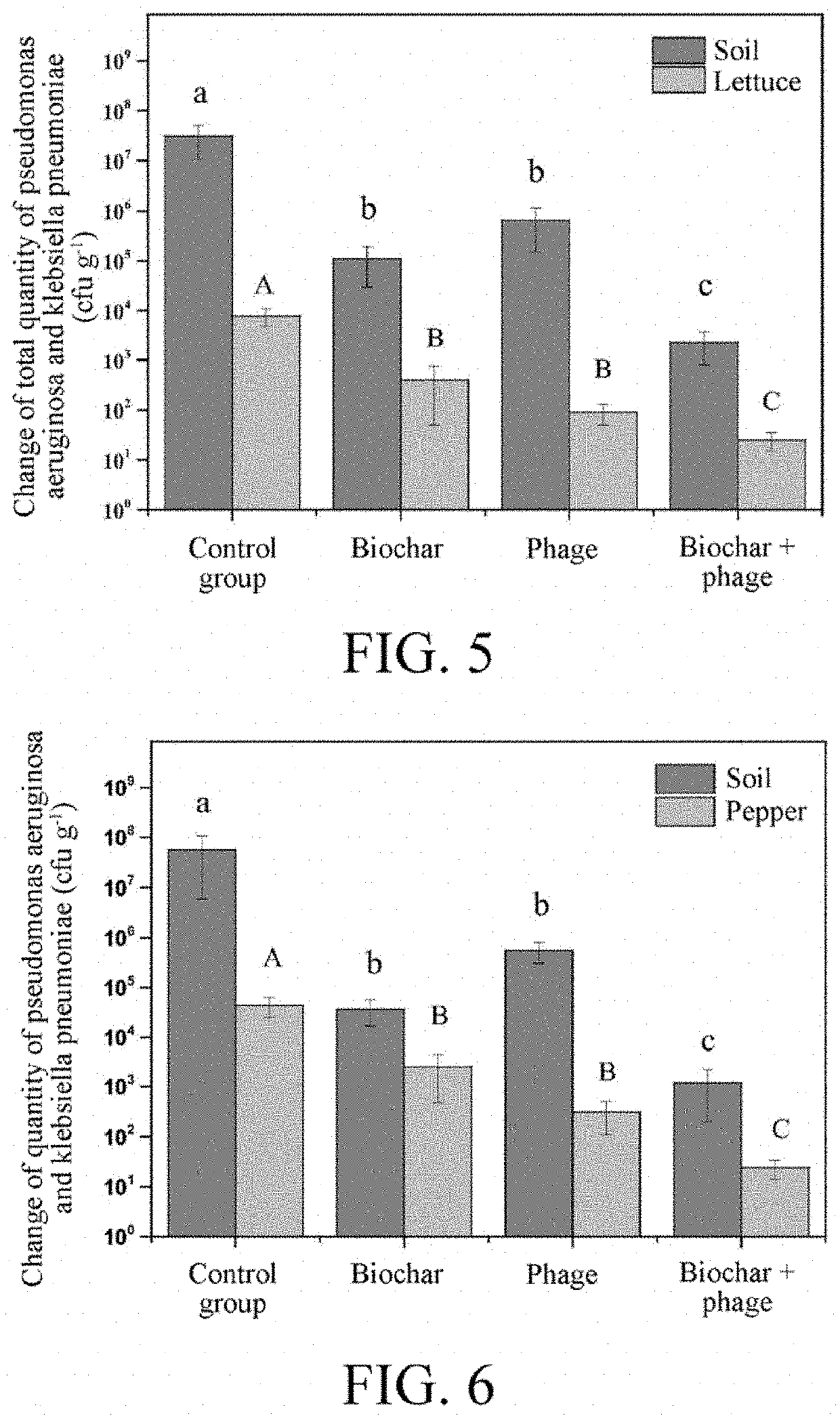Phage and use thereof in soil remediation
a technology of phages and soil, applied in the field of phages, can solve the problems of affecting the health of people and ecological safety, affecting the quality of soil, and spreading and transmission of some zoonotic antibiotic resistance pathogenic bacteria, so as to improve crop quality, and reduce the risk of infection
- Summary
- Abstract
- Description
- Claims
- Application Information
AI Technical Summary
Benefits of technology
Problems solved by technology
Method used
Image
Examples
example 1
[0033]Test potting soil was collected from contaminated soil around a manure accumulation pool of the Hengliang dairy farm in Nanjing, Jiangsu Province. Basic physical and chemical properties of the soil were as follows: sand grain: 23.8%, soil grain: 45.4%, clay grain: 31.8%, pH: 7.7, total nitrogen: 1.7 g·kg−1, water-soluble nitrogen: 1.7 g·kg−1, total phosphorus: 1.3 g·kg−1, total potassium: 17.5 g·kg−1, and CEC: 19.4 cmol·kg−1.
[0034]5 g of fresh soil samples were taken and added to 50 mL of sterile water, shake culture was performed for 5 h at 28° C. and 150 rpm, centrifugation was performed for 5 min at 10000 rpm, the supernatant liquid was sterilized by a 0.22 μm filter membrane, 9 mL of filtrate and 1 mL of a suspension of Pseudomonas aeruginosa PAO1 growing to a logarithmic phase were taken and added to 40 mL of LB liquid culture medium, calcium chloride solids were added until the final concentration of the solution was 1 mmol·L−1, shake culture was performed for 12 h at 30...
example 2
[0036]Test potting soil was collected from the contaminated soil around the manure accumulation pool of the Hengliang dairy farm in Nanjing, Jiangsu Province. Planting vegetables were carrots Seoul six-inch (Daucus L.), and were derived from Beijing Zhongnong Tianteng Vegetable Seed Company. Basic physical and chemical properties of the soil were as follows: sand grain: 23.8%, soil grain: 45.4%, clay grain: 31.8%, pH: 7.7, total nitrogen: 1.7 g·kg−1, water-soluble nitrogen: 1.7 g·kg−1, total phosphorus: 1.3 g·kg−1, total potassium: 17.5 g·kg−1, and CEC: 19.4 cmol·kg−1.
[0037]Four groups of treatment were set in experiments: (1) control group (CK): 3 carrots were planted per pot (0.5-1 cm of soil was covered on seeds, and the room temperature was 20±2° C.); (2) biochar treatment (B): the biochar (1 g / kg) was applied on the basis of the control group; (3) phage φYSZPK treatment (P): 100 mL of phage φYSZPK with a concentration of 106 pfu·mL−1 was inoculated on the basis of the control g...
example 3
[0039]Test potting soil was collected from the contaminated soil around the manure accumulation pool of the Hengliang dairy farm in Nanjing, Jiangsu Province. Planting vegetables were Hongpin No. 1 pod peppers (Capsicum frutescens var), and were derived from Qianshu Baihua Seed Industry Company. Basic physical and chemical properties of the soil were as follows: sand grain: 23.8%, soil grain: 45.4%, clay grain: 31.8%, pH: 7.7, total nitrogen: 1.7 g·kg−1, water-soluble nitrogen: 1.7 g·kg−1, total phosphorus: 1.3 g·kg−1, total potassium: 17.5 g·kg−1, and CEC: 19.4 cmol·kg−1.
[0040]Four groups of treatment were set in experiments: (1) control group (CK): 3 pod peppers were planted per pot (0.5-1 cm of soil was covered on seeds, and the room temperature was 25±2° C.); (2) biochar treatment (B): the biochar (1 g / kg) was applied on the basis of the control group; (3) phage φYSZPK treatment (P): 100 mL of phage φYSZPK with a concentration of 106 pfu·mL−1 was inoculated on the basis of the c...
PUM
| Property | Measurement | Unit |
|---|---|---|
| temperature | aaaaa | aaaaa |
| diameter | aaaaa | aaaaa |
| diameter | aaaaa | aaaaa |
Abstract
Description
Claims
Application Information
 Login to View More
Login to View More - R&D
- Intellectual Property
- Life Sciences
- Materials
- Tech Scout
- Unparalleled Data Quality
- Higher Quality Content
- 60% Fewer Hallucinations
Browse by: Latest US Patents, China's latest patents, Technical Efficacy Thesaurus, Application Domain, Technology Topic, Popular Technical Reports.
© 2025 PatSnap. All rights reserved.Legal|Privacy policy|Modern Slavery Act Transparency Statement|Sitemap|About US| Contact US: help@patsnap.com



